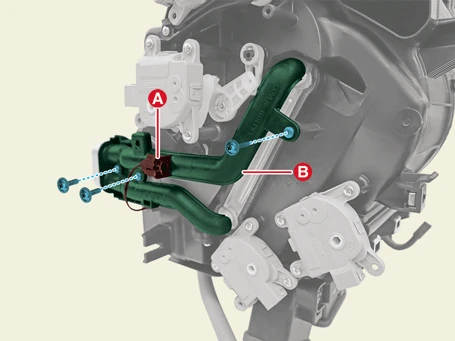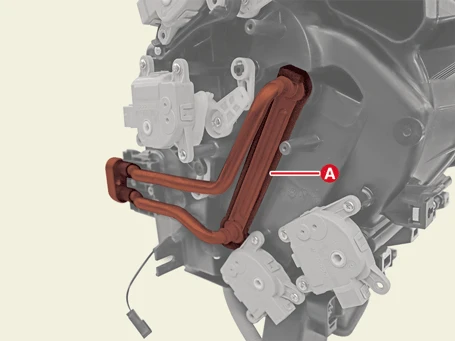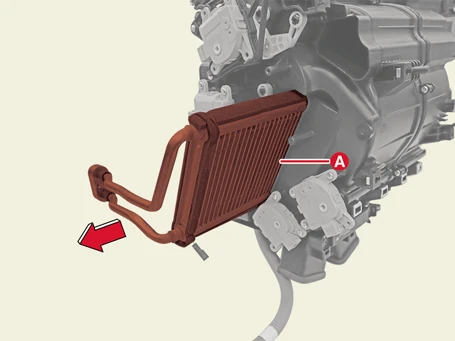Removal

• When working on high voltage system, the work should be performed by technicians who have completed the relevant training. A lack of understanding of the high voltage system can lead to serious accidents due to electric shock or electric leakage.
• When working a high voltage system, the technician must be observed and aware of "High Voltage System General Safety Information and Caution". If not, it may cause serious accidents such as electric shock or short circuit.
• When working on high voltage system, make sure to check the Personal Protective Equipment (PPE) and high voltage shut-off procedures.
1.Disconnect the battery negative ( - ) terminal and the service interlock connector.(Refer to Battery Control System - "Auxiliary 12 V Battery - 2WD")(Refer to Battery Control System - "Auxiliary 12 V Battery - 4WD")
2.Remove the heater unit.(Refer to Heater - "Heater Unit")
3.Remove the evaporator temperature sensor (A) and remove the inner condenser cover (B) after removing the screws.

4.Remove the inner condenser (A) in the direction of the arrow.


Installation

• When working on high voltage system, the work should be performed by technicians who have completed the relevant training. A lack of understanding of the high voltage system can lead to serious accidents due to electric shock or electric leakage.
• When working a high voltage system, the technician must be observed and aware of "High Voltage System General Safety Information and Caution". If not, it may cause serious accidents such as electric shock or short circuit.
• When working on high voltage system, make sure to check the Personal Protective Equipment (PPE) and high voltage shut-off procedures.
1.Install in reverse order of removal.

• If a new condenser is installed, replenish the compressor oil (POE OIL).
• Replace the O-rings at each connection with new ones, and apply a few drops of compressor oil (refrigerant oil) to the O-rings before connecting hoses or lines. To avoid leakage of R-1234yf, use the specified O-ring.
• When installing the condenser, be careful not to have an impact on the condenser fins.
• Charge the refrigerant system and test the air conditioner performance.